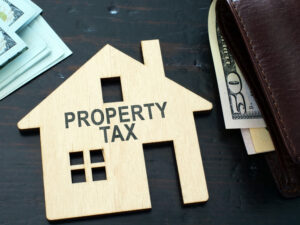Property taxes are a major source of income for city, county, and state governments. The tax is derived from a percentage of the assessed value of a property, true, but the municipality also determines how much money needs to be allocated for providing such services as education, transportation, emergencies, parks, recreation, and libraries. These are funded by property taxes.
Property taxes are calculated using the value of the property, including both the land and the buildings on it. Every one to five years, tax assessors will value the property and charge the owner the appropriate rate, using standards set by the municipality. Assessors calculate the value using either a millage rate or the assessed property value.

One mill equals one-10th of one cent or $1 for every $1,000 of a property’s value; different governments charge varying millage rates. Typically, your town or other jurisdiction might determine how much tax revenue it needs and then set a millage rate that will help it get there.
An assessor reviews relevant information about your property, estimating its overall value, looking at what similar properties are selling for under the current market conditions, how much the replacement costs for the property would be, the maintenance costs for the property owner, any improvements that were completed, any income you’re making from the property, and how much interest would be charged to purchase or construct a property comparable to yours.
Assessors estimate the property’s market value using any or all of the following three different methods:
Sales comparison method: Similar sales in the area using such criteria as:
- The location.
- The state of the property.
- Any improvements.
- Overall market conditions.
Assessors make adjustments to show such specific changes as new additions and renovations.
Cost method: How much would it cost to replace it, taking into account the following:
- If the property is older, assessors determine the amount of depreciation that’s taken place and how much the property would be worth if it were empty.
- For newer properties, assessors deduct any realistic depreciation and look at the costs of building materials and labor, including the results in the final value of the property.
Income method: How much income would you be able to make from the property if it were rented?
- With this method, the assessor considers the costs of maintaining and managing the property, insurance, taxes, and the return you may reasonably anticipate from the property.
- The assessed value is arrived at by taking its actual value and multiplying it by an assessment rate — a uniform percentage varied by tax jurisdiction, usually a percentage below 100 percent.
- The assessed value is multiplied by the mill levy to determine taxes due.
This method is more common with business properties.
Once assessors have the value, it’s sent to the property owner and is followed up with a tax bill. An assessor’s data is public record: Owners can see how much they must pay by going to the assessor’s website and entering an address.
The details can get confusing, especially as you may be paying property taxes to multiple jurisdictions. Let us know if you’re confused by your tax bill or think you might be overcharged.
We welcome the opportunity to put our tax expertise to work for you. To learn more about how our firm can help advance your success, don’t hesitate to contact Kathy Corcoran at (302) 254-8240.
©2024

